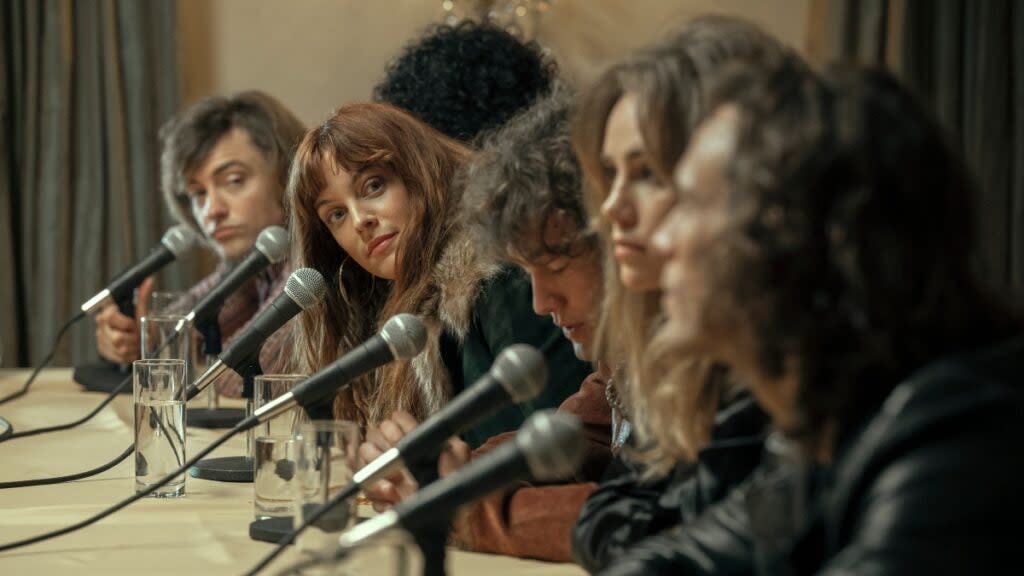‘Daisy Jones & the Six’ Director Nzingha Stewart Took Inspiration From ‘Goodfellas’ for Final Episodes

“Daisy Jones & the Six” executive producer and director Nzingha Stewart had a tall order in helming the second half of the limited series, but she took inspiration from a surprising place when it came to tackling these final episodes. James Ponsoldt directed the first five episodes of the adaptation of Taylor Jenkins Reid’s novel, but whereas the first half of the show charts the band’s rise, Stewart’s episodes find them on top of the world. That dichotomy is reflected in Martin Scorsese’s “Goodfellas,” and Stewart told TheWrap in a recent interview she kept going back to the gangster drama for inspiration.
“I felt like in ‘Goodfellas,’ it sort of worked like two movies. The first half of the movie, there’s a sense of innocence that they all have, and the second half, they’re as successful as they can be,” Stewart said. “They have the the drugs, they’re selling all of this stuff, they’re making all the money, but they are falling apart. They’re starting to fight each other, they’re starting to pull apart. The same way that the second half of ‘Goodfellas’ worked is how the second half of ‘Daisy’ should work.”
The series follows the rise and fall of the titular band who fictionally come together in a chance way to create one of the biggest albums in rock and roll. Their fame burns brightly but also for a short time as issues within the band bring them to ultimately break up.
TheWrap spoke with Stewart, who has directed episodes of Hello Sunshine projects “Little Fires Everywhere” and “From Scratch,” about her approach to “Daisy Jones & the Six” and leaving the audience wanting more after that finale.
Read the full conversation below:
What were the conversations like between you and James Ponsoldt in the shift between his episodes and yours?
Nzingha Stewart: In block one they’re a small, scrappy band from Pittsburgh, there’s a different style and visual language because Daisy and Billy’s worlds haven’t met yet. In block two, they are the biggest band in the world and these two are having this volatile and passionate relationship. It was really like resetting at episode six, and really making it my movie. You wanted it to feel like once Daisy and Billy get together, everything changes.
What references did you bring into Block 2 then, knowing it would be different from Block 1?
I watched a bunch of movies, just that felt totally right to me. But the one that I kept going back to was actually “Goodfellas.” I felt like in “Goodfellas,” it sort of worked like two movies. The first half of the movie, there’s a sense of innocence that they all have, and the second half, they’re as successful as they can be. They have the the drugs, they’re selling all of this stuff, they’re making all the money, but they are falling apart. They’re starting to fight each other, they’re starting to pull apart. The same way that the second half of “Goodfellas” worked is how the second half of “Daisy” should work. There’s crazy drug use and there’s random decisions like marrying a stranger. There’s a lot of stuff going on in that second second block.
Also Read:
How ‘Daisy Jones & the Six’ EPs Handled the Book’s Big Ending Reveal
How did your background directing music videos play into your direction of the final episodes of “Daisy Jones & the Six”?
In music videos, you come up with a concept as well. I knew how musicians move and operate and especially when they become really famous.A lot of times of actors, because of the nature of their profession, they audition, even when they’re talking to you feel a sense of, of an audition happening in front of you. With musicians, you are auditioning for them, and so it’s always sort of looking for that and making sure they felt like the rock star in the room. I’ve worked with the like, Jay Z’s and the 50 Cents and the Kanye and there’s no conversation you have with Jay Z that you don’t feel like you’re on audition. You feel like in the beginning, the first half, they were auditioning for Teddy Price. In the second half, people are auditioning for them.
Is there a beauty in making the show a limited series?
My favorite things are things where you continue to think about the characters after and we just asked each other questions like, “What do you think happens when Graham sees the documentary? What does he think when he sees what Karen said about him?” Me and Scott [Neustadter] made up our own versions of what happens in that afterlife. We talked about “Triangle of Sadness” and how it was so interesting, because you wonder “What happens at the end of the movie?” We both are saying we love shows that like, when it’s over, you’re still left thinking about those people and what they’re doing and what their life looks like now because that’s what a relationship is like, you may not talk to somebody for 10 years, and you wonder, like, what is that person doing now? Like what’s going on with them? And when it’s closed, it’s it’s not a relationship when there’s a definitive ‘and that’s the end,’ it’s not a relationship, but I do wonder like, what happened to the missing years with Daisy. Now do I think there’s a lot of material there for another great series? Yeah. But I also felt like this one was just perfect.
Daisy Jones & the Six is now streaming on Prime Video.
Also Read:
Behind Those Big ‘Daisy Jones & the Six’ Finale Relationship Shakeups


